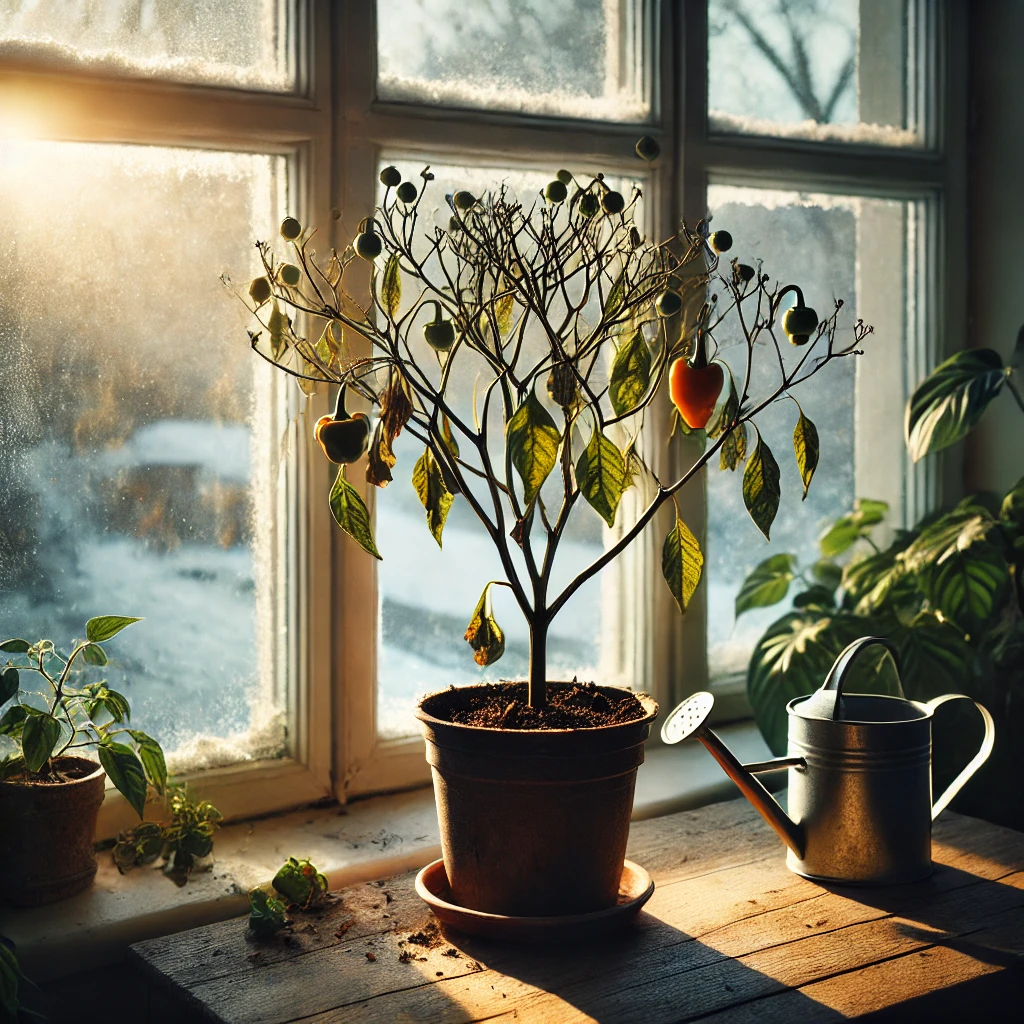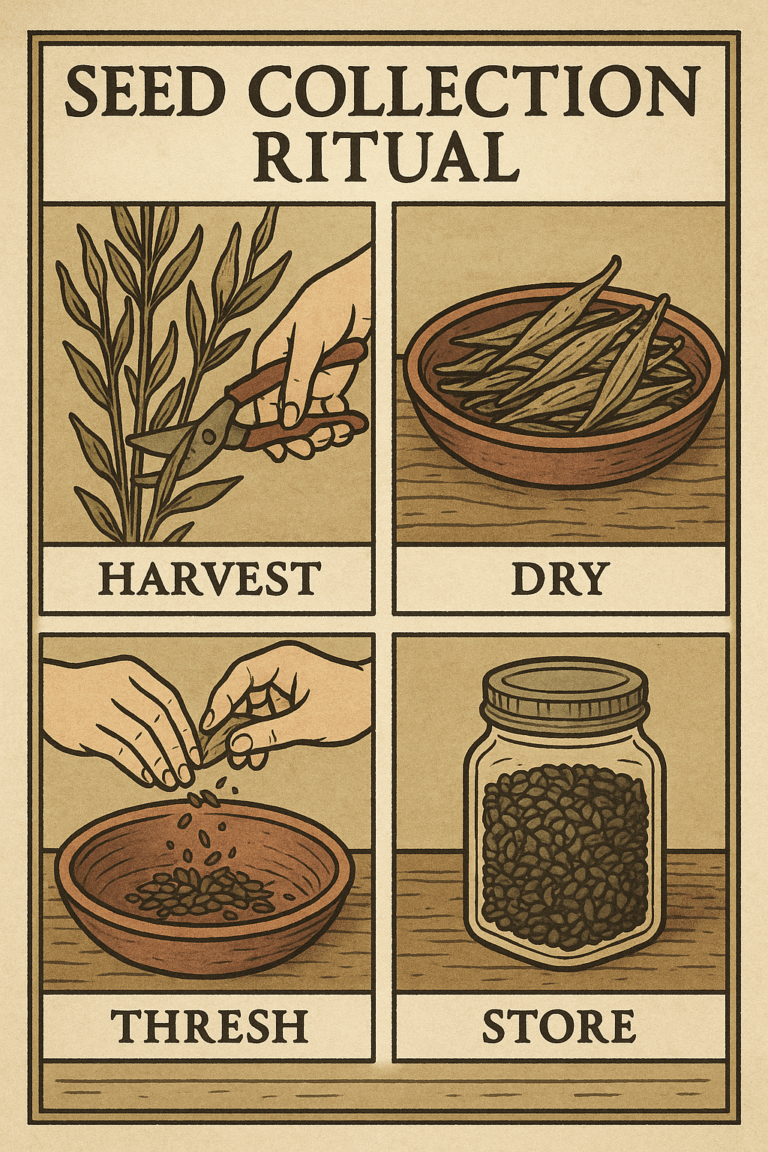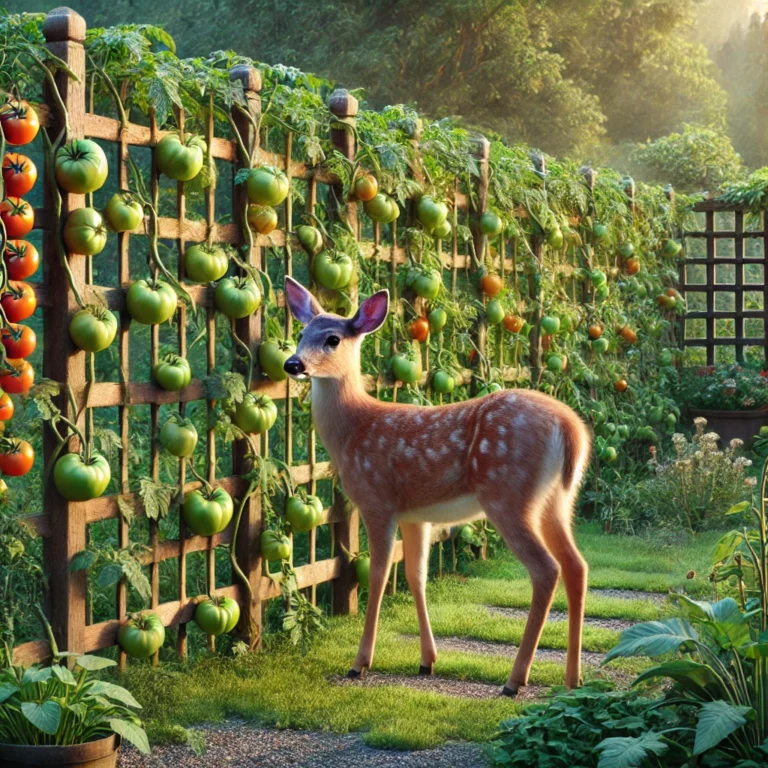I took the shears hesitantly in my hand, counted up two nodes, only about 1 foot up from the base on my three-foot award-winning jalapeno plant, and made the decisive cut. The cut began my gardening experiment to overwinter my pepper plants.
The Idea
I was leaning in a shovel in a community garden months before my decision, talking to a group of fellow gardeners on the way I use nightshades to protect my garden from deer. Doug said in one of those slow yet wise southern drawls, “It sounds pretty labor intensive, let alone expensive, to replant all of those plants every year. Did you ever think about just over-winterizing your peppers?” At that point, one of those ah-ha moments occurred, and I could not believe how narrow I had been thinking, let alone growing.
I Never Considered Overwintering My Pepper Plants – Until Now
I was deep in thought as I drove home with my mind racing. At first, I dismissed the idea as it seemed like too much hassle, and I have been growing peppers from seeds all my life. But, if Doug was right, overwintering could save me time and money, and the idea of having my first harvest up to a month earlier sounded great.
Breaking My Annual Mindset: Are Peppers Perennials?
Turning to my horticulture books and focusing on the nightshade family, I found that book after book mentioned that nightshades can live 3-5 years and sometimes longer with proper care. If the environmental conditions of healthy soil management, including the moisture content, are maintained, they can live a long and productive life. With the raised garden beds I set up, the well-draining soil full of nutrients from my constant compost top dressing made me think my peppers could thrive and survive as a perennial.
From Skeptic to Curious: What Changed My Perspective?
Cover crops and companion planting are the backbone of my gardening philosophy, blending nature with nurture. I plant nightshades as a natural deer repellent and pair them with companions like basil, buckwheat, carrots, and onions to protect and assist my crops. Basil boosts a tomato’s flavor, carrots and onions sweeten peppers, and buckwheat attracts beneficial insects to combat pests. My “nightshade fence” confuses intruders, creating a thriving, productive garden year-round. So, I knew it was time to up my game.
The Learning Curve: Researching The Overwintering Process
I thought, at first, overwintering just meant putting the plant in a pot indoors and watering it occasionally. I quickly learned there is a bit more to it. Pruning, pest control, and light all play a critical role.
My First Misstep: I Thought I Knew The Plant Lifecycle
How did I overlook such a fundamental question about the plant’s lifecycle? Depending on the variety, I knew that germination rates can take 1 week to 4 months. But I never questioned what happened beyond a single growing season. All my life, I assumed that peppers and tomatoes died at the first frost or postponed slightly with blankets and sheets placed over the crops as the fall overnight air hovered closer to 32 degrees.
Dormancy: The Lessons Learned and Discovered
But there it was as clear as day. Books, magazines, and online sources kept stating that many nightshade family plants, including peppers, don’t necessarily die after the growing season. Instead, they enter a dormancy phase—not a death phase. Dormant plants stop growing and reproducing, shifting into conservation mode to survive the harsher conditions of winter: limited light, water, and nutrients.
I realized I had misread this critical stage for years, assuming dormancy meant the end of life. It’s not an end—it’s a pause. This discovery made me rethink how I care for my garden and opened the door to new possibilities, like overwintering my plants for even better harvests in the future.
Is Overwintering Worth It: Pros and Cons
Doing some quick back-of-the-napkin math, I started to see the potential benefits of overwintering pepper plants. Starting Ghost Peppers from seed takes about a month to germinate and another month before they are ready to transplant into the garden. Overwintering, on the other hand, means I could keep my mature plants in a cold, dark place like my garage or basement, bypassing those early, slow-growing stages entirely.
Pros: Why Overwintering Could Save You Time and Money
· Faster Harvests: Overwintered plants have an established root system and main structural stems. When replanting in the Spring, the plant can focus most of its energy on growth and fruit production.
· Cost Savings: Avoid the expense of buying new seedlings or seeds every Spring.
· Larger Yields: Mature plants tend to produce more fruit than younger ones. Overwintering can lead to bigger harvests.
· Preserve Rare or Special Plant Varieties: Overwintering those hard-to-find pepper plants will make it easier than finding a reliable source to replace them.
Cons: The Challenges of Keeping Peppers Alive Indoors
· Space Requirements: Not everyone has the room to store potted plants indoors. There may be limits on how many plants you can keep without a garage or a basement.
· Risk of Pests and Disease: Overwintering indoor plants can sometimes introduce pests like aphids or whiteflies into your home.
· Energy and Time Commitment: Overwintering dormant plants still require occasional care. Light, watering, and pest monitoring are the primary time commitments.
· Not Guaranteed Success: Overwintering isn’t foolproof. Some plants may not survive the process and will need a replacement for Spring planting.
The Experiment: Preparing to Overwinter My Plants
The idea of cutting back a thriving, productive plant always feels counterintuitive. I often struggle with pruning back tomatoes, herbs, and even my melon vines. I am always pleased that I do this as I force the plant’s energy to redirect from growth to another phase of its life. So, removing most of the pepper foliage and pruning the plant back to a few nodes should conserve the plant’s energy during dormancy.
Choosing the Right Plant: Why My Jalapenos Made the Cut
My jalapenos grow exceptionally well every year, leaving me with tremendous harvests. Last year alone, I had so many that I smoked and dried a few hundred, making them into chipotle to later grind into chili power or use recipes. As a strong deer-resistant crop, a staple in our favorite Mexican cuisines, and a lover of the warm summer climate here in Virginia, the jalapeno plant seemed the right choice for my experiment.
Gathering Tools and Tips: What You Need to Get Started
Selecting the container was not all that difficult for me. I have dozens of 1-gallon nursery pots that fit the plant’s root system while still being small enough to manage in the corner of my basement. For easy cleanup and organization, I purchased a small round kiddie wading pool on clearance at a local box store to put all my potted plants in to catch any access drainage as I watered them over the winter. Use sterile potting soil to reduce the risk of introducing pests or pathogens into the indoor environment.
Trim the plant to about 1-2 feet in height by pruning to a “Y” with at least two nodes. Pruning this way promotes healthy regrowth by ensuring better air circulation, light penetration, and increased fruit production in the Spring. Remove all leaves to help the plant conserve energy during its dormancy and eliminate hiding spots for pests like aphids. Always use clean, sharp pruning sheets to minimize plant stress and prevent disease spread.
Root cleaning is the final step to eliminate pests like aphids and whiteflies. Gently remove the plant from its original soil, rinse the roots in lukewarm water, and soak the roots for 10-15 minutes in a mixture of hydrogen peroxide (combining one part of 3% hydrogen peroxide with four parts of water). After soaking, rinse the roots thoroughly, repot them into 1-gallon nursery pots with the sterile soil, and water lightly.
The Day I Made My Cut: Starting My Overwintering Journey
After weeks of overthinking and planning, I finally decided there was nothing left to do but try. Armed with shears, a pot, and a bit of courage, I walked out to my garden to give my jalapeno plant a second chance at life.
Doug’s Southern Wisdom: Why His Words Stuck With Me
Doug’s advice stuck with me: “If it doesn’t work, you have lost nothing but a little time, but if it does, you gained something incredible.” Those words truly echoed the spirit of gardening—learning, experimenting, and growing, not just for the plants but also for our understanding. The encouragement I’ve received from the gardening community has always been to try, take risks, and embrace the mysterious hidden lessons along the way.
With a “what do I have to lose attitude,” I decided to take the leap. Overwintering my pepper plants was not just about extending their lives. It was a personal growth moment to expand my knowledge, deepen my connection with the gardening process, and help mentor future generations of gardeners.
So now I encourage you to take the first cut, try something new, and let human curiosity guide you. Whether you are an experienced gardener or just starting, every experiment is a step towards something incredible. Leap with me, and let’s continue to grow together.




